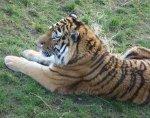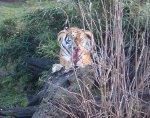 Among the world's most iconic animals, the tiger is by far one of the most famous and is an animal that is loved and adored by people of all ages from around the world. However, these elusive creatures are now very rare with all species either considered to be endangered or critically endangered.
Among the world's most iconic animals, the tiger is by far one of the most famous and is an animal that is loved and adored by people of all ages from around the world. However, these elusive creatures are now very rare with all species either considered to be endangered or critically endangered.India is one of the most important countries for the world's remaining tigers and is home to numerous sanctuaries and protected areas of their natural forest habitats to try and allow the populations to recover from such a drop in numbers, particularly over the past 100 years. However, deforestation of the dense jungle that tigers rely on so heavily for their protection is being lost at an alarming rate.

A breeding female can give birth to litters of three cubs at a time, however the sad truth remains that there is only a 50% chance that each individual will make it past the first year due to starvation, predation from wild animals and being killed by adult males in the area that feel threatened by the presence of cubs.

To find out more about more about tigers and their young please visit the Tiger page.

